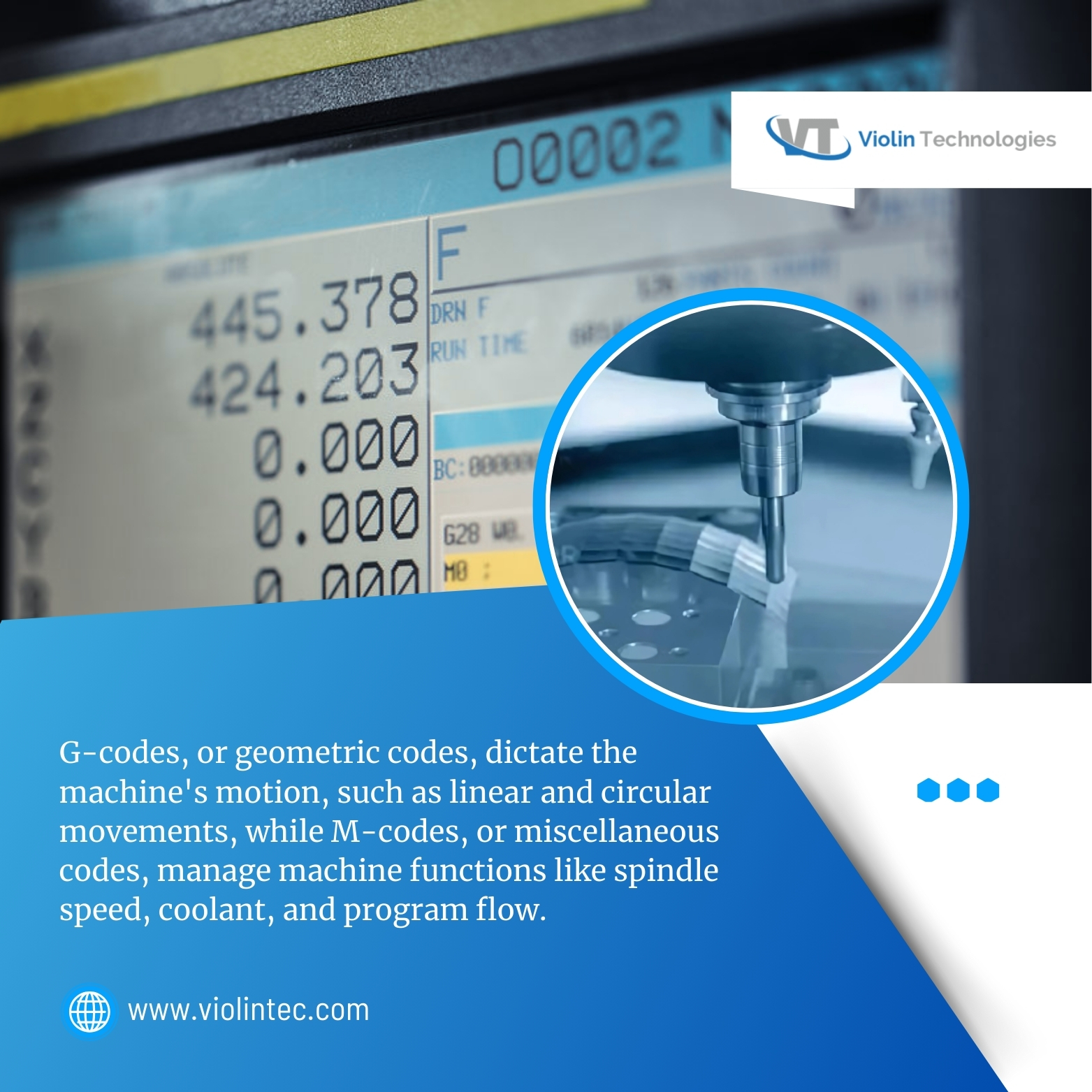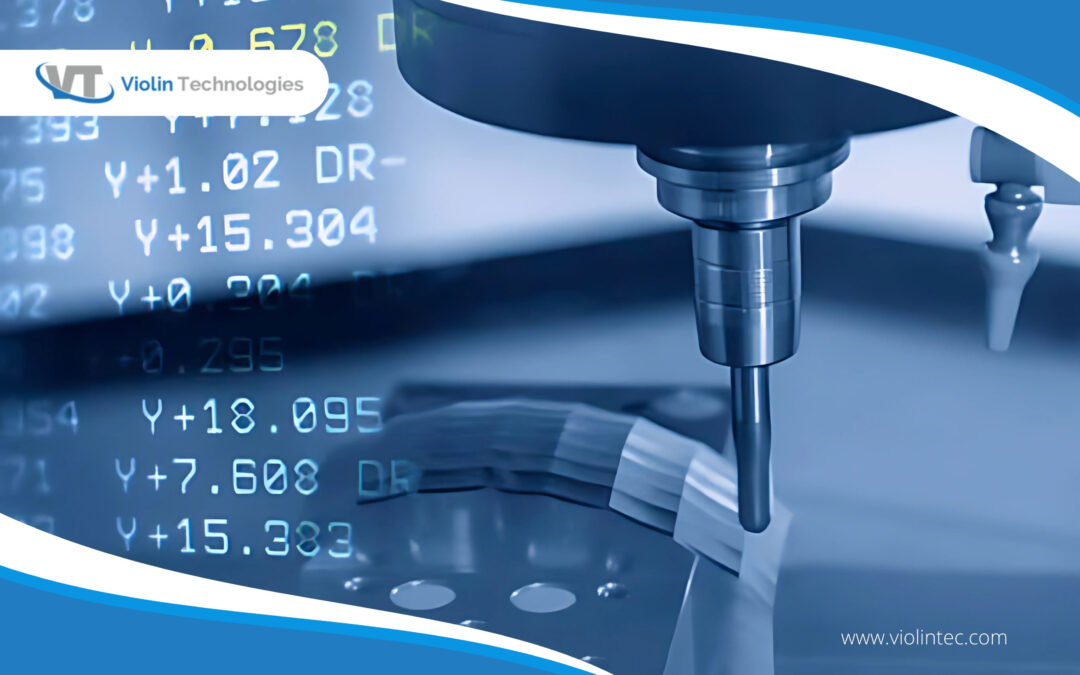Contrary to popular belief, G and M codes have different functions in CNC operations. While M codes manage the hardware, such as turning the spindle on or off, G codes primarily instruct the machine about the shape of the cut. Understanding this subtle distinction is essential to realizing the full potential of CNC machining.
This article examines the intricacies of these codes, revealing their distinct roles and how they collaborate to optimize the performance of CNC machines.
How does CNC Programming control CNC Machines?
Before computers, machinists controlled machine movements with cards or tapes. To generate the codes, they punched holes in these cards in a particular order. Although this worked well at the time, it was tiresome. Additionally, these cards were vulnerable to loss or damage in machine shops. This resulted in a number of manufacturing issues at the time.
However, with the introduction of sophisticated computers and software, CNC machining has undergone a complete transformation. Today, machinists need to enter instructions into software, which will provide the G and M codes that the machines require, thereby making code creation and machine operation more accessible and efficient.
G – Codes in CNC Programming: What Are They?
The most widely used CNC programming language is G-code, also known as RS-274D.
Most G code commands begin with the letter G, which stands for geometry, and are in alphanumeric format. When constructing a part, they are responsible for controlling the movements of CNC machines, instructing them on where to start, how to move, and when to stop.
Here are some essential G-Codes for everyone who works with CNC machines.
G00 – Rapid Positioning:
This command is preferably used to move the tool to specified coordinates at high speed. Its main function is to position the tool without cutting material, which maximizes the machine’s productivity for non-cutting operations.
G01 – Linear Interpolation:
In CNC machining, G01 is one of the most used G-codes, primarily for straight-line cutting. This command instructs the tool to travel at a predetermined feed rate in a straight line between two points.
G02 – Circular Interpolation (Clockwise):
This command simplifies the creation of circles and arcs by directing the tool along a clockwise circular path. It guarantees accurate movement to a designated endpoint, which is necessary for activities involving circular machining.
G03 – Circular Interpolation (Counterclockwise):
This command is like G02, but it moves the tool in a counterclockwise circular route. It’s crucial for creating circles and arcs that call for a counterclockwise motion.
G04 – Dwell:
This instruction instructs the CNC machine to pause for a specified amount of time at its current position. When a cutting tool needs to cool down or the spindle needs to reach the proper speed, the dwell function is especially helpful.
For superior manufacturing of precision machined components in the USA, the process relies on a deep understanding of CNC programming fundamentals, including the expert application of G and M codes.

M – Codes in CNC Programming: What Are They?
Like G code, M code starts with the letter “M” and contains several auxiliary commands that are essential for managing the non-geometric operations of a CNC machine. These codes, often referred to as miscellaneous codes, control essential functions such as halting the program, activating coolant systems, and shutting down the machine after a task is completed.
Frequently Used M Codes
While M-codes, which are like G-codes, are commonly used by CNC machines, model-to-model standardization is not always embraced. CNC programmers must therefore exercise caution when dealing with machine-specific programming. Some M-codes, however, always have the same meaning on all devices.
M00 – Program Stop:
To momentarily halt the CNC program. To restart the program again, the operator must frequently step in.
M02 – Program End:
To terminate the CNC program. The control will halt after running this code, and the operator might have to restart or reset the unit.
M03 – Spindle On, Clockwise:
To initiate the spindle’s clockwise rotation. To set the spindle speed, a speed command (S) is frequently used after it.
M04 – Spindle On, Counterclockwise:
M04 is used to turn on the spindle, just like M03, except it does so in the opposite way.
M05 – Spindle Stop:
To halt the spindle’s rotation. It is frequently used when the spindle must remain stationary for a tool change or other procedure.
How G and M Codes Differ from One Another
G-codes
- Controls the CNC machine’s movement and operation.
- Explains locations and movements, including circular interpolation, linear feed movement, and quick positioning to a particular XY plane.
- Used in product design and related to geometric codes.
- Turns the CNC machine on.
M-codes
- Manages tasks that don’t require motion, like halting programs, switching out tools, turning on or off spindles, and turning on coolant systems.
- Relates to how machines work and are used in a variety of other processes.
- Activates the machine’s programmable logic controller (PLC).
Conclusion
Learning G and M codes puts the control of powerful machines at your fingertips. Whether you’re machining your first part or automating complex production, these codes form the universal language of CNC manufacturing, bringing your digital designs to life with skill and precision.
FAQs
1. What is the purpose of G codes in CNC programming?
G codes specify precisely how the machine should move, such as the speed at which it should operate or the method for creating circles or straight lines.
2. In a CNC program, what are M codes used for?
M codes manage the support activities that extend beyond tool movement, such as changing tools, managing coolant, and turning the spindle on or off.
3. Is it possible for G and M codes to coexist in the same CNC program?
Indeed, programs blend the two codes: M codes operate the machine’s functions to ensure smooth functioning, whereas G codes direct movement and cutting.
4. Do all CNC machines use the G and M codes the same?
While most machines utilize standard codes, some may have unique ones; always consult the handbook for your equipment.

